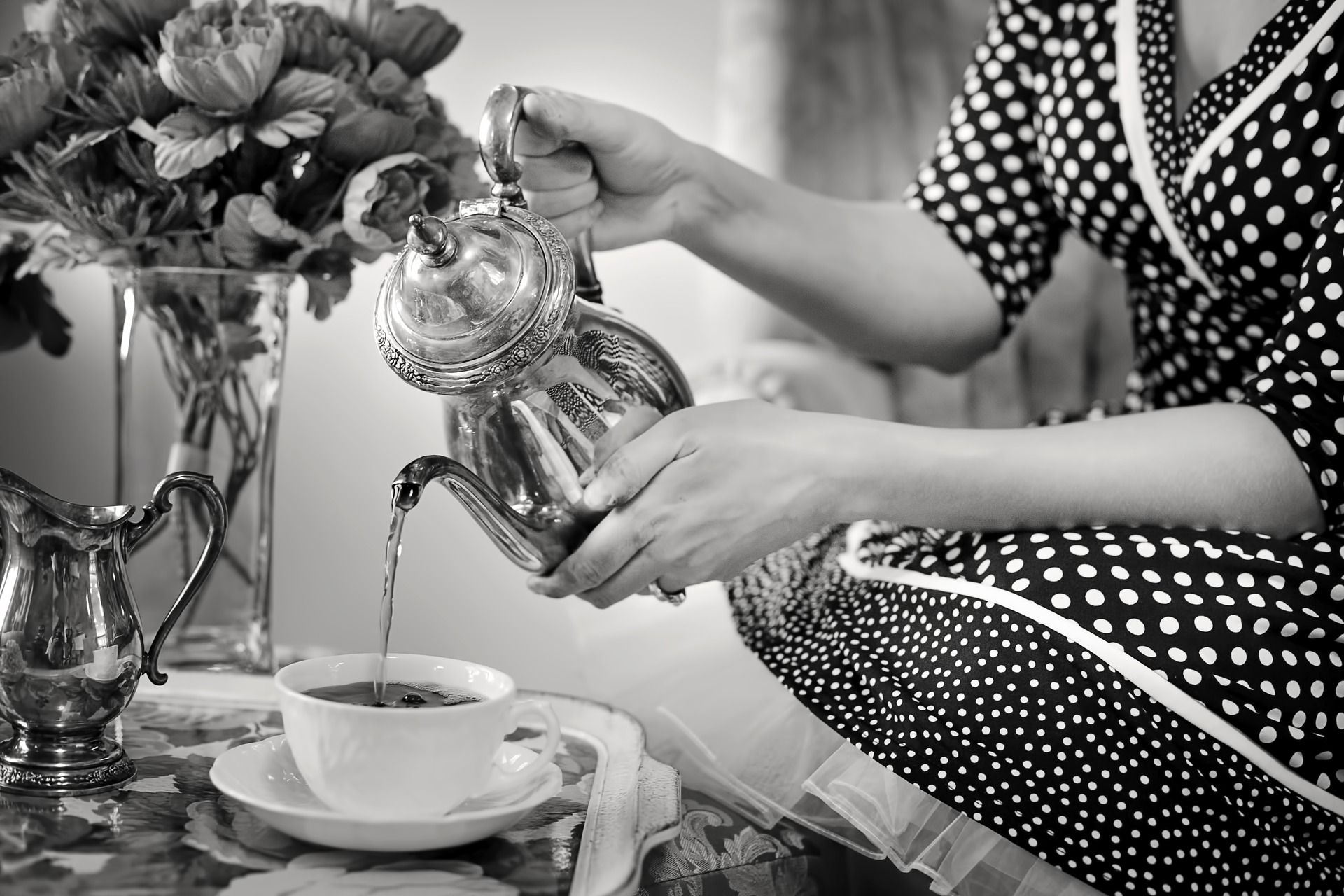Today we are checking out the history of tea parties – not political ones, and not the ones with little girls and dolls and stuffed animals.
We’re talking about real, afternoon tea parties, British-style.
Tea started to come about in England during the 17th century with the reign of Charles II and Catherine. Catherine hailed from Portugal, where they drank tea. She brought the custom with her to England.
Catherine invited friends into her bedroom chamber to share tea with her. The tea and dishes were kept in the closet at this time, instead of in the kitchen. Other women began picking up this practice.
By the 1670s, tea was being imported from other countries, along with goods such as cotton and silks.
By the 1700s, tea was on sale in more than 500 coffee houses in London. Coffee houses were getting to be quite popular – but women weren’t allowed in.
Clearly, the women needed their own space for tea drinking and socializing away from the men, but there was a functional reason for needing tea time too: an excuse to eat.
At the time, the English consumed only two main meals – breakfast and dinner. Dinner was in the middle of the day, but at one point it was moved to the evening, sometimes being served as late at 8PM.
Consequently, there was a long stretch in between meals demanding a third time of the day for eating.
By the 1800s, the men folk started engaging in their own third meal lunch parties, during which they would discuss important political affairs. The women got tired of waiting for the men during these long stretches when they were quite hungry, and thus afternoon tea time was developed during the 1830s and 1840s.
At afternoon tea, the ladies could delve into their own political discussions which would not have been allowed in front of men.
Thus, each sex had their own socially appropriate outlet for food and conversation. The men had their political lunches and their coffee houses; the women had afternoon tea at home.
Anna Maria Stanhope, the Duchess of Bedford and one of Queen Victoria’s ladies-in-waiting, is credited with promoting the rise of afternoon tea – and, subsequently, high tea.
It is said that Stanhope claimed “a sinking feeling” at about four-o-clock in the afternoon, due to the aforementioned duration between meals. Hence, four-o-clock afternoon tea.
(I would get a sinking feeling too if I didn’t eat in between breakfast and dinner, except mine would probably come at 11AM.)
Typically, tea time would last about an hour, from 4PM to 5PM. At five, the ladies would retire to their rooms to rest up for dinner, which was between 6PM and 8PM. Again, this is a long time to go without eating, even given the small pickings that were likely offered at afternoon tea.
In lieu of the lack of lunch, afternoon tea morphed into high tea, which took place an hour later, at 5PM. And, there was more food offered than ever before at tea parties.
Brilliant, as the British would say.
Savory, finger-sized sandwiches, small cakes, and other sweets would be served. Eventually, the tea time meal grew to include more substantial offerings, such as meat and potatoes.
The term “high tea” is in reference to the higher tables used in the interest of catering to more food; it could also be considered a nod to the “higher” hour on the clock.
Also, high tea was for both sexes, compared to afternoon tea, which was primarily female in attendance.
For the upper class, high tea was popular to hold on Sundays, so as to allow maids and butlers to go to church. The lady of the house would prepare the meal for high tea so the servants didn’t have to cook.
Speaking of the classes, although afternoon tea times were common among everyone, the poor usually had to drink it black, or watered down with milk and brown sugar. I would imagine they had less food, and less pomp and circumstance, too.
Indeed, afternoon tea could consist of a small gathering or a grand affair, from the poor to the rich and everyone in between.
Tea did not become popular in America until the late 1800s.
As mentioned in the history of coffee, Americans longed to differentiate themselves from their British heritage, and this included tea. With the Boston Tea Party, coffee effectively became the primary (nonalcoholic) drink of Americans.
If you’d like to bring the custom of afternoon or high tea to America, here are some etiquette tips you can practice:
- The “up pinkie” was developed for the original tea cups which had no handle; it allowed for balance so you didn’t spill your drink. If doing so, the pinkie should be slightly tilted. If using a normal, modern tea cup, no pinkie up at all.
- Do not serve tea with cream; lemon or milk only – one or the other, never together – and lemon slices, not wedges.
- The savory food items are served first, followed by scones, then sweets.
- Do not use the tea bag string to wrap around or squeeze the tea bag itself.
- The spoon goes behind the cup; don’t leave in the cup.
- Do not stir your tea.
- Do not loop your fingers through the handle or grip the tea cup with the palm of your hand.
- Do not use tea to wash down your food; sip, don’t slurp.
- Dispose of the tea bag properly – in a side saucer or slop bowl.
And, you can find some great tea sandwich recipes here.
